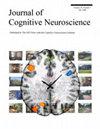Impact of Transcutaneous Vagus Nerve Stimulation on Event-related Potentials during a Response Inhibition Task
IF 3
3区 医学
Q2 NEUROSCIENCES
引用次数: 0
Abstract
As an emerging neuromodulation technique, transcutaneous auricular vagus nerve stimulation (taVNS) has shown promise in enhancing cognitive abilities. The present study used a combination of the go/no-go task and the stop-signal task experimental paradigm to examine the cognitive effects of taVNS on participants' EEG measures. Sixty-one healthy participants were randomly assigned to either the stimulation group or the sham group. Participants in the stimulation group received 100 Hz and 25 Hz stimulation in a counterbalanced order. We compared behavioral and EEG data before and after stimulation, and observed significant effects. The findings revealed that a 100-Hz taVNS significantly reduced participants' N2 latency in the stop trial, indicating potential improvement response inhibition. In addition, we noted a decreasing trend in alpha, theta, and delta band power during response inhibition after receiving a 100-Hz taVNS. These results suggest that a 100-Hz taVNS can enhance participants' response inhibition abilities, indicating its potential as a therapeutic approach for modulating cognitive functions.经皮迷走神经刺激对反应抑制任务中事件相关电位的影响。
经皮耳迷走神经刺激(taVNS)作为一种新兴的神经调节技术,在增强认知能力方面显示出良好的前景。本研究采用走/不走任务和停止信号任务相结合的实验范式,考察了taVNS对参与者脑电图测量的认知影响。61名健康参与者被随机分配到刺激组和假手术组。刺激组的参与者以平衡的顺序接受100赫兹和25赫兹的刺激。我们比较刺激前后的行为和脑电图数据,观察到明显的效果。研究结果显示,100 hz的taVNS显著降低了停止试验中参与者的N2潜伏期,表明可能改善反应抑制。此外,我们注意到在接受100 hz taVNS后,在响应抑制期间α, θ和δ波段功率呈下降趋势。这些结果表明,100 hz的taVNS可以增强参与者的反应抑制能力,表明其作为调节认知功能的治疗方法的潜力。
本文章由计算机程序翻译,如有差异,请以英文原文为准。
求助全文
约1分钟内获得全文
求助全文
来源期刊
CiteScore
5.30
自引率
3.10%
发文量
151
审稿时长
3-8 weeks
期刊介绍:
Journal of Cognitive Neuroscience investigates brain–behavior interaction and promotes lively interchange among the mind sciences.

 求助内容:
求助内容: 应助结果提醒方式:
应助结果提醒方式:


